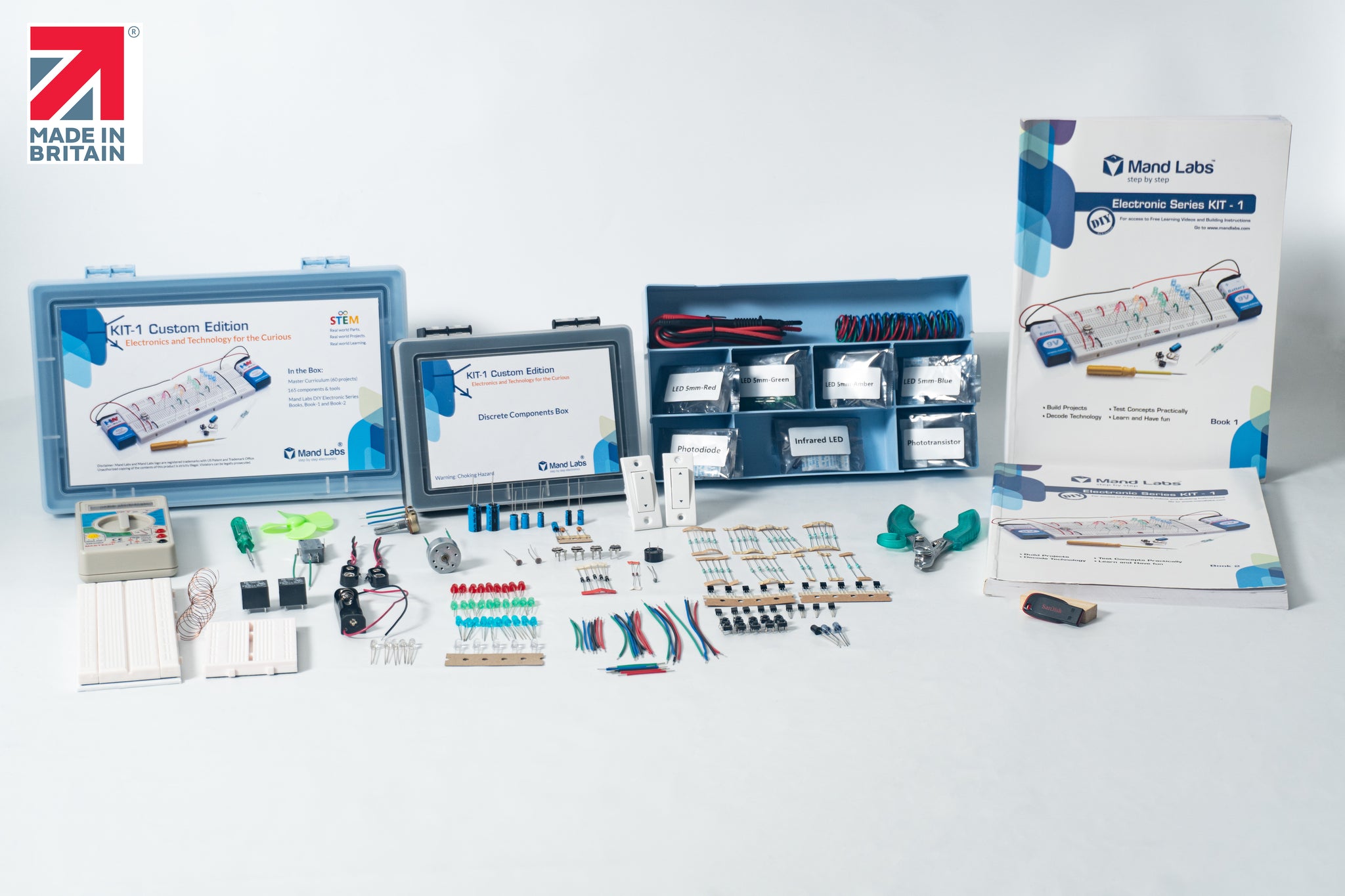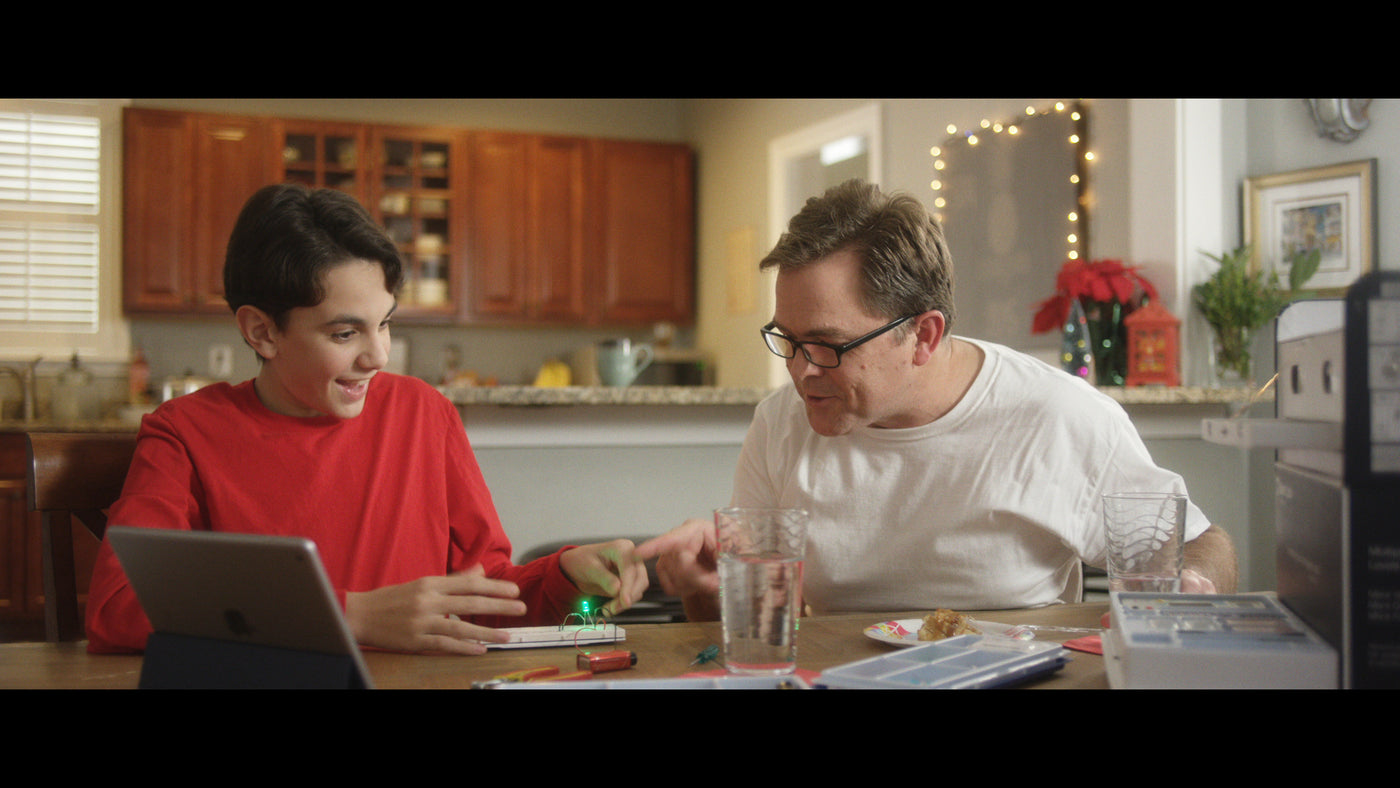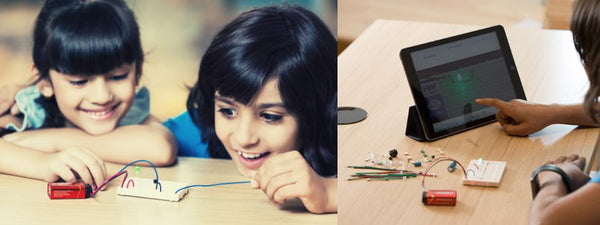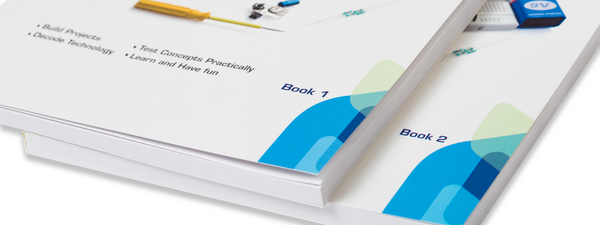
join our pre-order campaign to get 29% discount ($54 less) on KIT-1. Book with 50% deposit scheme.
Pre-Order Mand Labs KIT-1 Custom Edition, Version-4
$135.00 $189.00
The Only Electronics Kit You Need to Master Basic Electronics in 25 Hands-on Hours
Perfect for Middle and High School Children
Perfect for STEM Educators running Makers spaces and Robotics Programs
Perfect for Homeschooling Parents
watch our Christmas story
Disclaimer: As parents and viewers, we request you to consider this product for both your boys and girls. We are neutral creative humans with no gender bias. Our intention in this story is to just communicate the idea of hands-on learning and not hurt anyone's feelings. All actors in the video are for representation purpose only.
As Seen In




What Are You Looking For
Testimonials

I found your booth at ISTE in Chicago and knew your kit would be a perfect fit for my classroom. I was only able to purchase one. It has been a class favorite in grades 6-10. I teach STEM for different grade levels. My STEM lab is a makerspace.
– Alicia Roberts

I was trying to stock up a maker space type area. Without vast knowledge of electronics your kit helped me from needing to spend hours online or at Fry's Electronics. Just a nice easy way to stock up quickly.
– Timothy Riedel

I bought it to donate it to a STEM teacher down the hall from me. He incorporated it into his Design Challenge. I’ll be using this product with my students in a STEM Middle School. I love the fact that everything is packed within the box, but even better I love the curriculum.
– Elma L Strong

I am a homeschooling parent. I bought it for the instructions and curriculum. To have an organized curriculum corresponding to the physical electronics is a great value at the price point you offered the kit. We are satisfied. More than a year later, my son still regularly interact with the kit and has a good grasp on the basics.
– Bryan Biggers

I was looking for a way to include an electrical engineering project into one my STEM classes. Your kit gave me what I needed to get the kids designing. They were able to create a game, a joy stick and hack a box so when the lid was taken off an alarm would sound.
– Kelly Muhlenkamp

I was looking for something that I can use with my kids to teach them about electricity. This kit is geared towards high schoolers and up, but I already had success with much younger kids-7yo and 9yo who have already played with other electronic sets and understand the basic ideas behind circuits. It is so well organized, there is just no way of misplacing components. The books are colorful, well organized, everything is documented-step by step process and functionality.
– Teodora Beloreshka
what is KIT-1?
KIT-1 is a DIY (do-it-yourself) kit to practically experience and learn fundamental Electronics/Electrical Engineering. KIT-1 Standard Edition comes packaged with 50+ hands-on projects, 136 electronic components and hardware, 2 reference books, 9 hour learning videos in a flash drive, step-by-step project building instructions and a portable workstation.
Using KIT-1, users can learn concepts through our extensive curriculum, apply concepts to build an array of exciting 50+ hands-on projects, experience electronics in action on real hardware and learn having lots of fun on the way.
Projects That You can Make

Burglar Alarm
Place this circuit under the doormat and have fun with friends visiting your house.

IR Security Alarm System
This project has received 40,000 hits on Instructables.com and is now #1 on Google Search. Install this in your room or house to avoid unsolicited visitors.

Alternate Blinking of LEDs
A perfect project for Christmas! In this project, we use a transistor as a flip-flop to blink the LEDs alternately.

DC Motor as Generator
See how motion produces electricity and turns ON an LED, based on a simple physics principle called EMI (Electromagnetic Induction).

Temperature Sensor
Make a real fire-alarm system, expose it to heat and see how the LED turns ON when temperature rises.
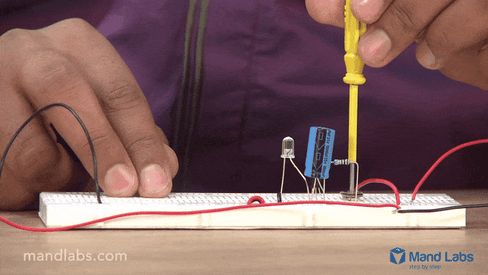
LED Flasher/Blinker
In this project, we use the Esaki Effect, popularly known as quantum tunnelling, and named after its inventor, Leo Esaki (Nobel Prize Winner in Physics).

BE A PROBLEM SOLVER
When one is making circuits, there are many things you can go wrong with - short circuits, wrong polarity (positive and negative), wrong connections, choosing wrong parts, open circuits, short wires, etc. We believe this is the real moment for problem-solving, exploration, and tinkering- trying to figure out what went wrong.
KIT-1 gives complete intellect freedom to doers to make mistakes and learn from them. Burn things, do short circuits, mess things up because that's how you learn.
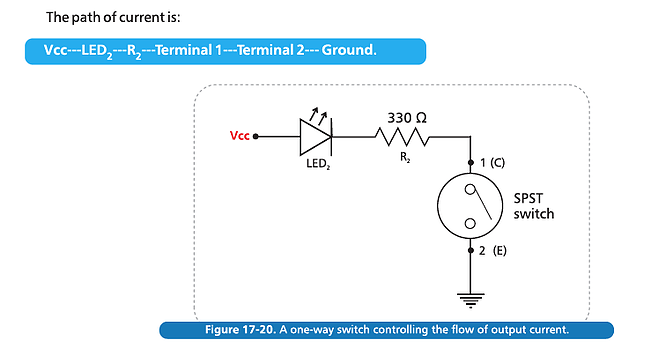
BE A CRITICAL ANALYST
After completing a project, you get into the “whys” and “hows". You do the math, apply laws of physics and trace the path of currents to develop an in-depth understanding about the project and the components used.
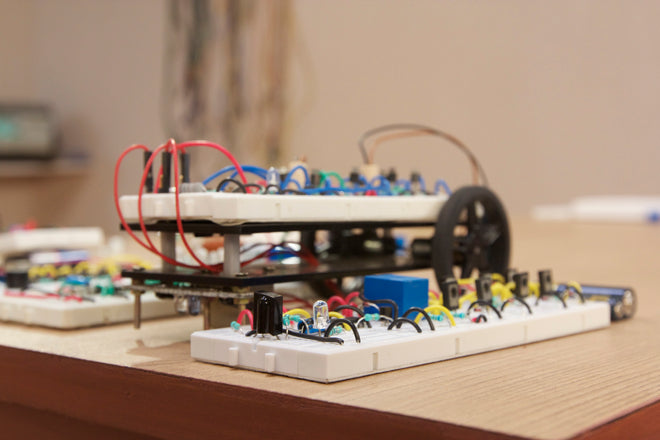
Be a Maker of Technology
Technology seems "technical" because the products we use are sealed and we do not have access to their inner logic and components.
You will break this conventional paradigm and learn how to decode technology. One of the ways to learn electronics is to build something from scratch using the components and then question its working. That's is exactly you will do. You will build things, ask questions and then develop a holistic understanding. You will become a maker of technology than being its mere consumer.
